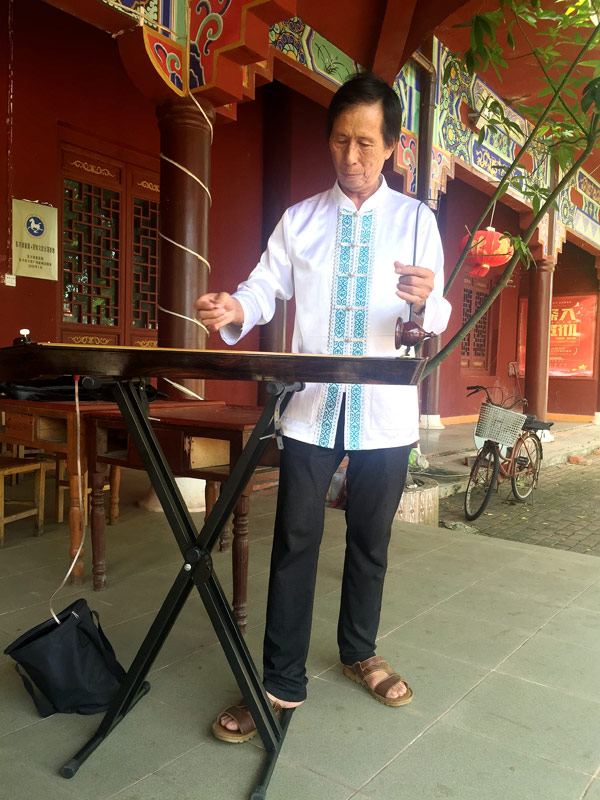 |
|
Su Chunfa, a duxianqin player, has long engaged in promoting the art form by teaching local students. [Photo/China Daily] |
"People were interested and it's a great way to show Jing culture to the outside world," he says.
In addition to performing with the duxianqin, Su has long engaged in promoting the art form by teaching local students, since the 1990s.
"There were very few people who could play back at that time, and my teacher asked me to carry on the legacy of the duxianqin," he recalls.
At first, he went to local schools and taught the instrument for free. Then, the number of his students grew. So far, Su has imparted his skills to hundreds of young people.
"I can put my mind at rest now, because I have many students who can play the instrument decently," he says.
There are more than 10 places that offer duxianqin lessons in the region and Su would also send duxianqin to them to encourage the adoption of the instrument, and regularly review the lessons himself during his visits.
In 2008, Su's active engagement in local art and culture earned him the title of head of Hating, a site for local Jing ethnic people to gather and celebrate major festivals.
Under Su's leadership, the annual traditional Hajie, or Changha festival for Jing people, has grown over the years.
The festival took shape in 1511 after the Ming Dynasty (1368-1644), but was halted in the 1960s before being re-established in the 1980s.
It takes place on the ninth day of the sixth month of the Chinese lunar calendar, which falls on July 21 this year.
Su's duxianqin performance has greatly spiced up the festival, along with sacrificial rituals, singing, dances and harvest celebrations.
It has become quite a sight, as more than 100 locals in Jing ethnic costumes play the musical instrument at the same time to worship the god of the sea on the beach near Hating during the festival.
"The place is filled with visitors during the Hajie festival," says Tan Haidong, an official with the Dongxing government.
Jing culture has given local tourism a shot in the arm-a total of 600,000 people visited the coastal area in the first six months, up 6.8 percent compared with the same period last year, according to Tan.
"More are expected in the summer," he says.
Visitors usually interact with the locals at the night gala and eat with them during the festival.
Moreover, the duxianqin has helped Wanwei village to develop a deep friendship and strong ties with Vietnam.
People from Vietnam make visits to the town every year, and interact with the Jing people in Guangxi.
"We also sing together," Su says. Thanks in part to Su's efforts, the duxianqin is not confined to the local Jing people any more.
People from all across the country, including Hong Kong, northeastern Liaoning province, come to Su's door.
"I'm really excited that more people are fond of it, and our Jing culture will continue to thrive," he says.